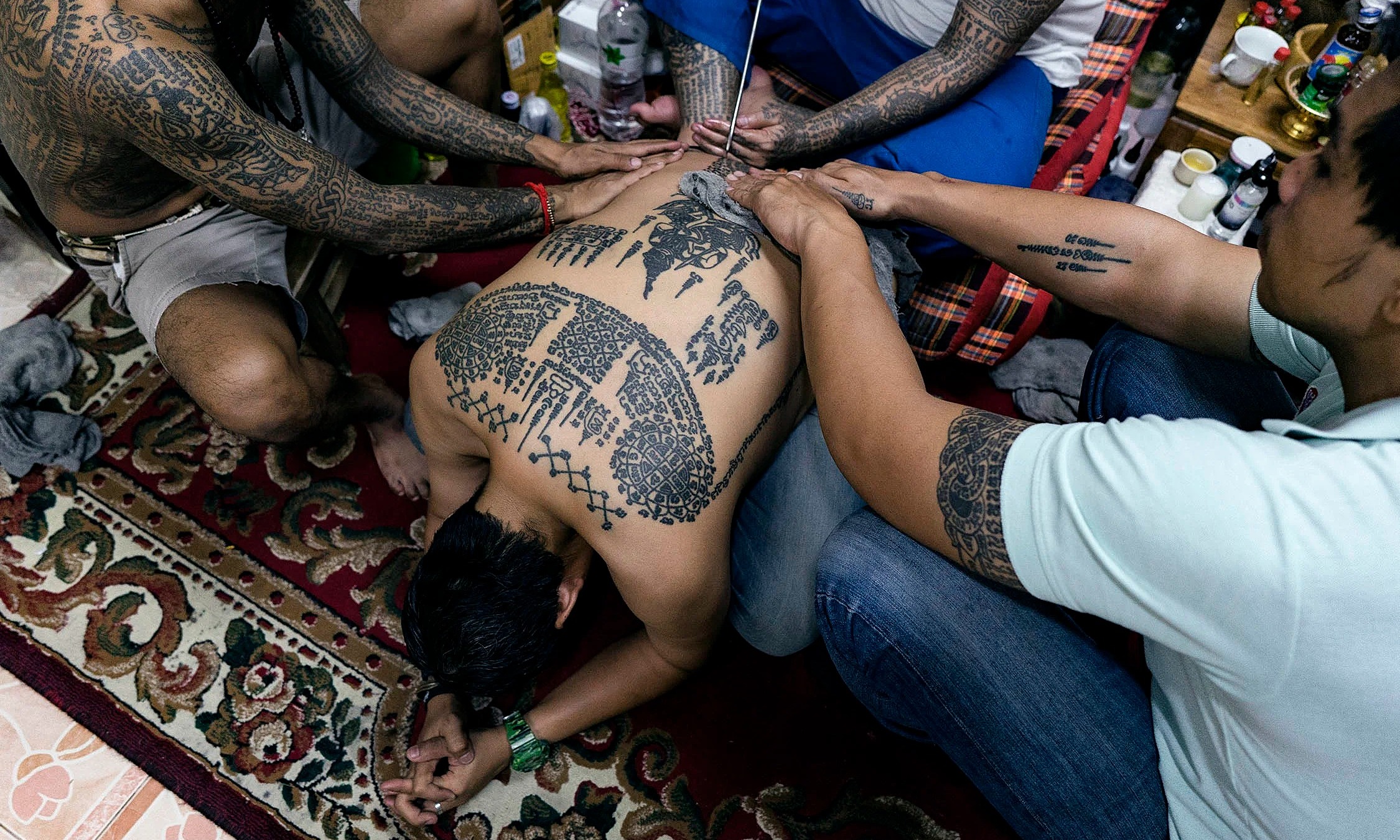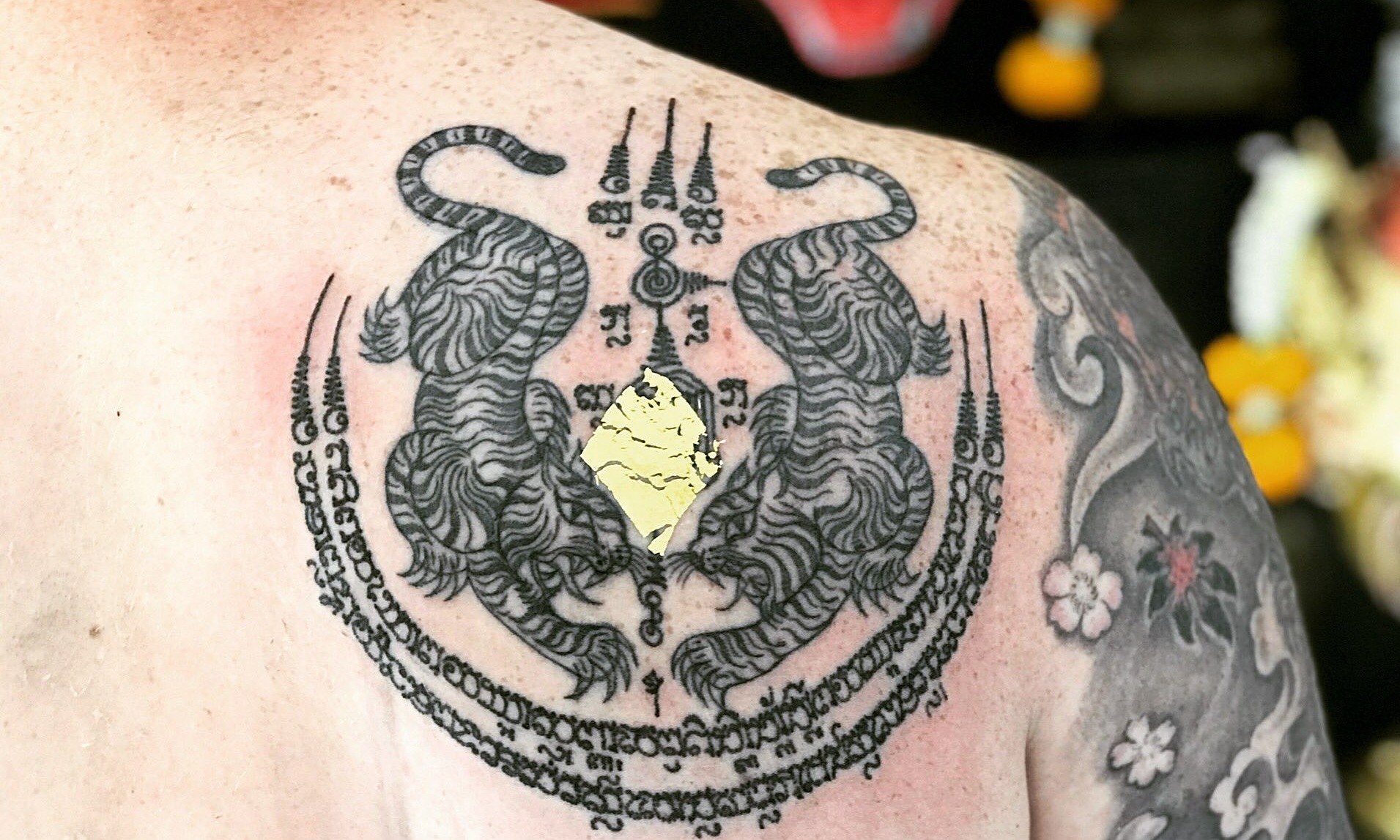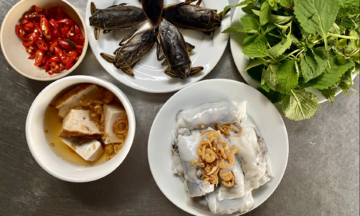Noi's body is a canvas of intricate tattoos. Ancient words and images cover his back and shoulders, a crisscross pattern adorns his neck, and a warrior brandishing crossed swords dominates his chest. A prayer, freshly inked at a small studio behind a temple south of Bangkok, graces his leg. Each tattoo bears the distinctive blue-black lines of sak yant.
Before his session, Noi presented Ice, a sak yant master (arjan), with an offering on a golden tray: flowers, rice wine, and incense.
Sak yant, originating in Southeast Asia thousands of years ago, is more than just body art. Instead of carrying physical amulets into battle, warriors would have sacred images tattooed onto their skin, often using sharpened bamboo. While bamboo is rarely used now, the practice endures, with many believing in the protective power of sak yant.
Noi is among many, including numerous tourists, who seek out Ice's studio for prayer tattoos. The words Ice inks are millennia-old prayers written in Pali, a language no longer widely spoken but still studied due to its use in some Hindu and Buddhist texts. These words form a prayer, called an aukkara, invoking spirits to protect the bearer.
 |
A sak yant tattooing session. Photo: Stranger Talk |
A sak yant tattooing session. Photo: Stranger Talk
With the tattoo complete, Noi sat before Ice, hands clasped, head bowed. Ice rubbed oil into the tattoo and began chanting, his voice rising in speed and volume. This kata chant is believed to activate the tattoo's protective power. Abruptly, Ice stopped, taking three sharp inhalations, as if drawing in the air around Noi.
For believers, the arjan's ability to imbue the tattoo with power is paramount. "You need to check where the master comes from," said Bell, a local. Before finding Ice, she tried sak yant three or 4 times with no effect.
Ice, trained by his father who learned from older masters, assured Bell of his tattoos' potency. Bell opted for a sak yant applied with oil, believed to carry similar power without the permanence. Within two years, she claims her business flourished, bringing her financial independence she'd never imagined.
For Bell, societal perceptions in Thailand discouraged a permanent tattoo. Some Thais view sak yant, on both locals and foreigners, as "low class," carrying class-based prejudice.
Many Thais see sak yant's popularity as a sign of religious decline. Knowing Buddha, a group critical of sak yant, is known for its large billboard along the main highway from Bangkok's largest airport, proclaiming: "Buddha is not for decoration. Respect is common sense. Using Buddha images for tattoos and decorations is wrong".
Some sak yant designs incorporate Buddhist imagery, such as the popular "Buddha's Body" design, and the tattooing is often performed by monks in many Thai temples.
Popular designs include the hah taew (five lines), gao yord (nine peaks), and paed tidt (eight directions). Hah taew, originating in the Lanna kingdom over 700 years ago, is said to offer various blessings, including protection from unjust punishment, warding off evil spirits, countering bad luck, and enhancing personal magnetism.
 |
The "twin tiger" sak yant is popular among Thais in dangerous professions. Photo: Sak Yant Ajarnboo Brangpha |
The "twin tiger" sak yant is popular among Thais in dangerous professions. Photo: Sak Yant Ajarnboo Brangpha
Gao yord, considered the "yant kru" (master yant), represents the nine peaks of the mythical Mount Meru, offering comprehensive protection from evil and blessings of authority, strength, and good fortune. Paed tidt, with its eight-directional geometric design, protects the wearer when traveling in any direction and against evil spirits.
More complex designs, featuring animals and sacred symbols, are often reserved for those with deep faith or specific occupations. The twin tiger, symbolizing strength, authority, and protection, is popular among soldiers, police officers, entrepreneurs, and fighters.
The Hanuman tattoo, depicting the Hindu monkey god, bestows protection, courage, and confidence. The turtle (dtao ruen) signifies prosperity, good luck, and longevity, while the crocodile (jorakhae) represents strength and protection from physical harm.
Elements within sak yant designs also carry meaning. The circle symbolizes Buddha's face, the triangle represents the triple gem (Buddha, Dhamma, Sangha), the square signifies the four elements (earth, water, wind, fire), and the spiral (unalome) represents the path to enlightenment. Each detail is carefully drawn to convey spiritual power, and wearers are often asked to follow precepts such as respecting parents and Buddha, and avoiding negative behavior, to maintain the tattoo's effect.
Pattadon Sangduen, assistant director of Knowing Buddha, argues that the idea behind sak yant contradicts Buddhist precepts about the impermanence of the body and the practice of letting go.
"Many people who get sak yant have good intentions," he said, but emphasized that they only engage with the surface of Buddhist teachings. If they delved deeper, they wouldn't pursue sak yant.
Among arjans, the required precepts can vary. According to Bell, the main rules are respecting parents and Buddha, and avoiding negative speech. Some arjans are stricter, requiring abstinence from intoxicants.
Hoai Anh (From Culture Trip, Sak Yant Chiang Mai)












